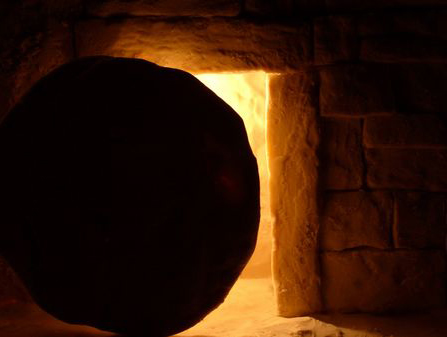Osteochondral allograft transplantation can be an effective method for managing large focal osteochondral knee defects, achieving favorable results through careful pre-operative planning and accurate surgical execution.
Dr. Dimitrios Giotis, Orthopaedic Surgeon, Orthopaedic Department, General Hospital of Ioannina “G. Hatzikosta”, 60 Stratigou Makrigianni Avenue, 45445. Ioannina, Greece. E-mail: dimitris.p.giotis@gmail.com
Introduction: Focal osteochondral defects in young individuals pose a significant challenge, often leading to chronic knee pain, functional limitations, and early onset of osteoarthritis if untreated. Osteochondral allograft (OCA) transplantation can offer a promising solution for large osteochondral defects. The aim of the study is to present a surgical approach for managing a large focal osteochondral defect in the lateral femoral condyle of a young, active patient through OCA transplantation.
Case Report: A 24-year-old male presented with atraumatic knee effusion, progressive pain, and impaired physical function. Imaging revealed a large osteochondral lesion in the lateral femoral condyle. After thorough pre-operative planning, including the creation of a 3D-printed model of the distal femur, the patient underwent lateral femoral condyle allograft transplantation. The procedure involved excision of the lesion, preparation of a size-matched OCA, and fixation with cannulated screws. Bone marrow aspirate concentrate was applied to enhance graft integration. Post-operative management included a progressive rehabilitation protocol with gradual knee flexion and weight-bearing. At 6 months postoperatively, the patient demonstrated significant clinical improvement with a Lysholm Knee Score of 89 and an International Knee Documentation Committee score of 87.4%. Follow-up imaging confirmed graft integrity and articular congruency.
Conclusion: OCA transplantation is an effective surgical option for large osteochondral defects in the knee, providing satisfactory functional and clinical outcomes. This case highlights the importance of meticulous pre-operative planning, precise surgical technique, and structured post-operative rehabilitation in achieving successful results.
Keywords: Osteochondral lesion, focal osteochondral defect, lateral femoral condyle transplantation, allograft, bone marrow aspirate concentrate.
Focal or osteochondral defects in young, high-demand patients present a challenging issue that can significantly impact the quality of life if left untreated. These defects can lead to joint degeneration, chronic knee pain, progressive functional impairment, and early-onset knee osteoarthritis [1, 2]. Over the past decades, several surgical techniques have been developed to address these defects with encouraging short-, mid-, and long-term outcomes [3]. These techniques include: (1) chondroplasty/debridement, (2) marrow stimulation/microfracture, (3) cell-based therapies such as autogenous chondrocyte implantation (ACI) or matrix-assisted ACI, and (4) osteochondral restoration using osteochondral autograft transfer (OAT) or osteochondral allograft (OCA) transfer [3]. While the first three approaches aim to restore the articular surface, osteochondral restoration offers the advantage of addressing both the cartilage and subchondral bone components [3]. Unlike OAT, which is generally limited to smaller, isolated defects, OCA transplantation can also be applied to large, multifocal, and multicompartmental defects without the constraints of tissue availability or the donor site morbidity associated with autograft transfer [4, 5]. The OCA procedure involves the use of size-matched allograft tissue, sourced from a fresh or refrigerated cadaver, and tailored to the patient’s osteochondral defect [6]. Despite challenges such as limited allograft availability due to the scarcity of donor grafts, contour matching issues, the risk of disease transmission, and high cost, OCAs have shown excellent clinical and functional outcomes for femoral condyle defects, with long-term studies reporting 5- and 10-year survival rates exceeding 95% and 90%, respectively [4,5-9]. The goal of a successful OCA transplantation in the knee is to recreate the natural articular contour of the hemicondyle, ensuring minimal mismatch or step-off between the graft and the host tissue [9,10]. The purpose of this study is to present a step-by-step surgical approach for treating a large focal osteochondral defect in the lateral femoral condyle of a young, active patient using OCA transplantation. The post-operative management protocol is also discussed.
A 24-year-old male patient presented to our clinic with complaints of intermittent atraumatic effusion in his right knee for the past 3 months, accompanied by progressively worsening pain. His symptoms were exacerbated after joining the army, with pain and functional limitations, significantly impairing his quality of life and daily activities. The patient was overweight (Body Mass Index – BMI: 27.2 kg/m2) but otherwise healthy. On physical examination, knee effusion and palpable crepitus were observed during active and passive range of motion. His Lysholm Knee Score was 67, and the International Knee Documentation Committee (IKDC) score was 71.3%. Plain radiographs revealed a large osteochondral lesion in the lateral femoral condyle (Fig. 1), which was further evaluated using computed tomography (CT) scan and magnetic resonance imaging (MRI) (Fig. 2 and 3). A three-dimensional printed model of the patient’s distal femur, based on the CT imaging, was created to evaluate the focal articular defect and facilitate the pre-operative planning (Fig. 4).

Lateral condyle allograft transplantation was proposed to the patient, considering the location and the size of the osteochondral defect. The use of OCAs is regulated by the National Organization for Medicines and the National Transplantation Organization. These agencies ensure compliance with the European Union Tissues and Cells Directives (EUTCD 2004/23/EC, 2006/17/EC, 2006/86/EC), which establish the standards for donor screening, procurement, processing, and distribution of human tissues. After providing written informed consent, the patient underwent the following operation. Under general anesthesia, the patient was positioned supine. After proper disinfecting and draping, diagnostic knee arthroscopy through anteromedial and anterolateral portals was performed, confirming the lesion. No other intra-articular pathology was noted. Then, a lateral parapatellar approach was used to access the lateral aspect of the knee. The skin incision incorporated the anterolateral arthroscopy portal, and the infrapatellar fat pad was debrided for better exposure of the lateral femoral condyle lesion (Fig. 5).
The lesion’s dimensions were measured with a sterile ruler, and lateral femoral condyle margins of excision were marked with a sterile marking pen. The affected lateral femoral condyle was excised using an oscillating saw under continuous saline irrigation to minimize thermal necrosis. The size of the osseous deficit was then measured (Fig. 6). The next step was to prepare the allograft. A size-matched femoral hemicondyle was carefully marked and cut with the oscillating saw in the exact dimensions of the excised lateral femoral condyle (Fig. 7). The donor dimensions and its radius of curvature were carefully assessed to avoid mismatch and to ensure articular congruity. 50 ml of bone marrow aspirate was collected from the anterolateral aspect of the ipsilateral tibia, which was centrifuged to produce bone marrow aspirate concentrate (BMAC). The BMAC was applied carefully to the final donor construct, to increase the chance of osseous integration. Subsequently, the donor was fixated in the recipient lateral femoral condyle with two inferosuperior 4.5 mm cannulated screws under fluoroscopy (Fig. 8). The surgical wound was closed in layers. A functional knee brace with a goniometer locked in extension was secured to the patient’s knee postoperatively, and a radiograph was obtained (Fig. 9).

Gradual knee flexion was permitted and increased every 2 weeks, reaching 0–90° by the sixth post-operative week. Partial weight-bearing was allowed after 6 weeks, with full weight-bearing introduced at 3 months. Physical therapy focused on quadriceps strengthening and regaining range of motion. At the 6-month follow-up, the patient reported significant improvement, with a Lysholm Knee Score of 89 and an IKDC score of 87.4%. Follow-up CT imaging demonstrated graft integrity and maintained articular congruency (Fig. 10). The patient was encouraged to advance from light training to resuming sport activities.
The main objective of cartilage restoration surgery is to enhance joint function and alleviate pain. Surgery is primarily recommended for patients with large (>2 cm²), full-thickness, non-bipolar (isolated) chondral defects who experience persistent pain, mechanical symptoms, recurrent swelling, and significant functional impairment [3,7]. One of the key concerns for patients undergoing OCA transplantation is the procedure’s long-term effectiveness and its ability to delay or prevent the need for future surgeries, such as knee replacement, which was also considered in our patient. The success of OCA transplantation basically relies on the surgical technique, as well as proper graft integration and biomechanics [6]. To the best of our knowledge, this study is the first to detail a single-stage surgical procedure for OCA transplantation to treat large focal osteochondral defects in the lateral condyle of the knee in a young individual. Despite the variety of techniques described for allograft transplantation in the knee joint, with indications based on the shape, size, and location of the chondral defect, we focused on achieving surface congruity, as it has been identified as a critical factor in the success of OCA transplantation [7-11]. However, due to the numerous factors affecting condyle geometry, surgeons should take into consideration that even a size-matched orthotopic allograft may not closely replicate the surface contour of the recipient femoral condyle. Furthermore, graft healing following OCA transplantation is crucial for clinical success and relies on the neovascularization of surrounding tissues and cellular repopulation [12]. Cartilage healing failure often results from compromised cartilage integrity or viability, or insufficient integration of graft bone into the host [12]. To improve osseous integration, BMAC was applied to the donor construct, as similarly described by Oladeji et al., who reported improved osseous integration and reduced sclerosis on radiographic imaging at 6 months postoperatively for femoral condyle OCA transplantations treated with BMAC compared to untreated allografts [13].
To evaluate graft integrity and articular congruency 6 months postoperatively, a CT scan was performed. While MRI was generally considered the gold standard for assessing graft incorporation after OCA transplantation, recent studies have demonstrated that MRI scores do not correlate meaningfully with clinical outcome scores [10,14]. Conversely, Gelber et al. found a strong correlation between CT findings and clinical outcomes in such patients. This may be attributed to the superior ability of CT scans to assess bone integration and detect cystic changes, which have been shown to significantly impact clinical results following focal OCA transplantation [15]. In literature, there are studies that report high allograft survival in mid- and long-term follow-ups, with satisfactory clinical and functional results, which however identify risk factors for failure [4,5,7-9]. Thus, advanced age, high BMI, post-operative high-impact activities, comorbidities, larger osteochondral defects, defects in weight-bearing zones, previous failed cartilage debridement, inadequate allograft fixation, and improper alignment among others, have been negatively associated with the final outcomes [4,5,7-11]. Interestingly, these studies also report a considerable reoperation rate exceeding 30% after an average follow-up of 5 years, despite the high allograft survival rate over the same period [7-9]. These results provide valuable information for counseling patients, showing that OCA transplantation offers a high likelihood of graft survival and excellent clinical outcomes, provided the surgery is performed for appropriate indications and associated injuries are properly managed.
OCA transplantation can be an effective surgical option for large focal osteochondral defects, offering significant pain relief, improved joint function, and the potential to delay joint degeneration. However, success depends on meticulous surgical technique, proper graft selection, and achieving articular congruency, while adjunctive techniques like BMAC augmentation could enhance osseous integration.
Large focal osteochondral defects of the knee may significantly deteriorate the function of the joint and lead to severe limitations of the patients’ daily activities. OCA transplantation is a reliable joint-preserving treatment modality that yields good outcomes and satisfactory long-term viability.
References
- 1.Heir S, Nerhus TK, Røtterud JH, Loken S, Ekeland A, Engebretsen L, et al. Focal cartilage defects in the knee impair quality of life as much as severe osteoarthritis: A comparison of knee injury and osteoarthritis outcome score in 4 patient categories scheduled for knee surgery. Am J Sports Med 2010;38:231-7. [Google Scholar]
- 2.Houck DA, Kraeutler MJ, Belk JW, Frank RM, McCarty EC, Bravman JT. Do focal chondral defects of the knee increase the risk for progression to osteoarthritis? A review of the literature. Orthop J Sports Med 2018;6:2325967118801931. [Google Scholar]
- 3.Dekker TJ, Aman ZS, DePhillipo NN, Dickens JF, Anz AW, LaPrade RF. Chondral lesions of the knee: An evidence-based approach. J Bone Joint Surg Am 2021;103:629-45. [Google Scholar]
- 4.Tirico LE, McCauley JC, Pulido PA, Bugbee WD. Lesion size does not predict outcomes in fresh osteochondral allograft transplantation. Am J Sports Med 2018;46:900-7. [Google Scholar]
- 5.Gilat R, Haunschild ED, Huddleston HP, Tauro TM, Patel S, Wolfson TS, et al. Osteochondral allograft transplant for focal cartilage defects of the femoral condyles: Clinically significant outcomes, failures, and survival at a minimum 5-year follow-up. Am J Sports Med 2021;49:467-75. [Google Scholar]
- 6.Chahla J, Stone J, Mandelbaum BR. How to manage cartilage injuries? Arthroscopy 2019;35:2771-3. [Google Scholar]
- 7.Frank RM, Lee S, Levy D, Poland S, Smith M, Scalise N, et al. Osteochondral allograft transplantation of the knee: Analysis of failures at 5 years. Am J Sports Med 2017;45:864-74. [Google Scholar]
- 8.Gross AE, Kim W, Las Heras F, Backstein D, Safir O, Pritzker KP. Fresh osteochondral allografts for posttraumatic knee defects: Long-term followup. Clin Orthop Relat Res 2008;466:1863-70. [Google Scholar]
- 9.Sherman SL, Garrity J, Bauer K, Cook J, Stannard J, Bugbee W. Fresh osteochondral allograft transplantation for the knee: Current concepts. J Am Acad Orthop Surg 2014;22:121-33. [Google Scholar]
- 10.Wang T, Wang DX, Burge AJ, Pais M, Kushwaha B, Rodeo SA, et al. Clinical and MRI outcomes of fresh osteochondral allograft transplantation after failed cartilage repair surgery in the knee. J Bone Joint Surg Am 2018;100:1949-59. [Google Scholar]
- 11.Lee S, Frank RM, Christian DR, Cole BJ. Analysis of defect size and ratio to condylar size with respect to outcomes after isolated osteochondral allograft transplantation. Am J Sports Med 2019;47:1601-12. [Google Scholar]
- 12.Bugbee WD, Pallante-Kichura AL, Görtz S, Amiel D, Sah R. Osteochondral allograft transplantation in cartilage repair: Graft storage paradigm, translational models, and clinical applications. J Orthop Res 2016;34:31-8. [Google Scholar]
- 13.Oladeji LO, Stannard JP, Cook CR, Kfuri M, Crist BD, Smith MJ, et al. Effects of autogenous bone marrow aspirate concentrate on radiographic integration of femoral condylar osteochondral allografts. Am J Sports Med 2017;45:2797-803. [Google Scholar]
- 14.De Windt TS, Welsch GH, Brittberg M, Vonk LA, Marlovits S, Trattnig S, et al. Is magnetic resonance imaging reliable in predicting clinical outcome after articular cartilage repair of the knee? A systematic review and meta-analysis. Am J Sports Med 2013;41:1695-702. [Google Scholar]
- 15.Gelber PE, Ramirez-Bermejo E, Grau-Blanes A, Gonzales-Osuna A, Farinas O. Computerized tomography scan evaluation after fresh osteochondral allograft transplantation of the knee correlates with clinical outcomes. Int Orthop 2022;46:1539-45. [Google Scholar]














